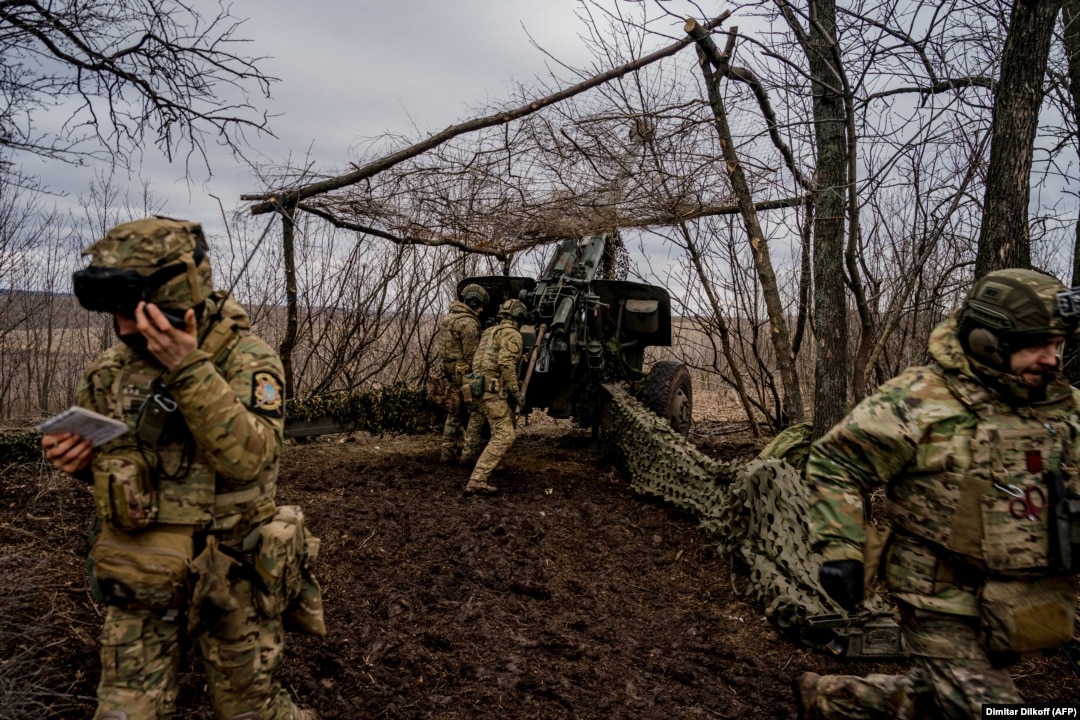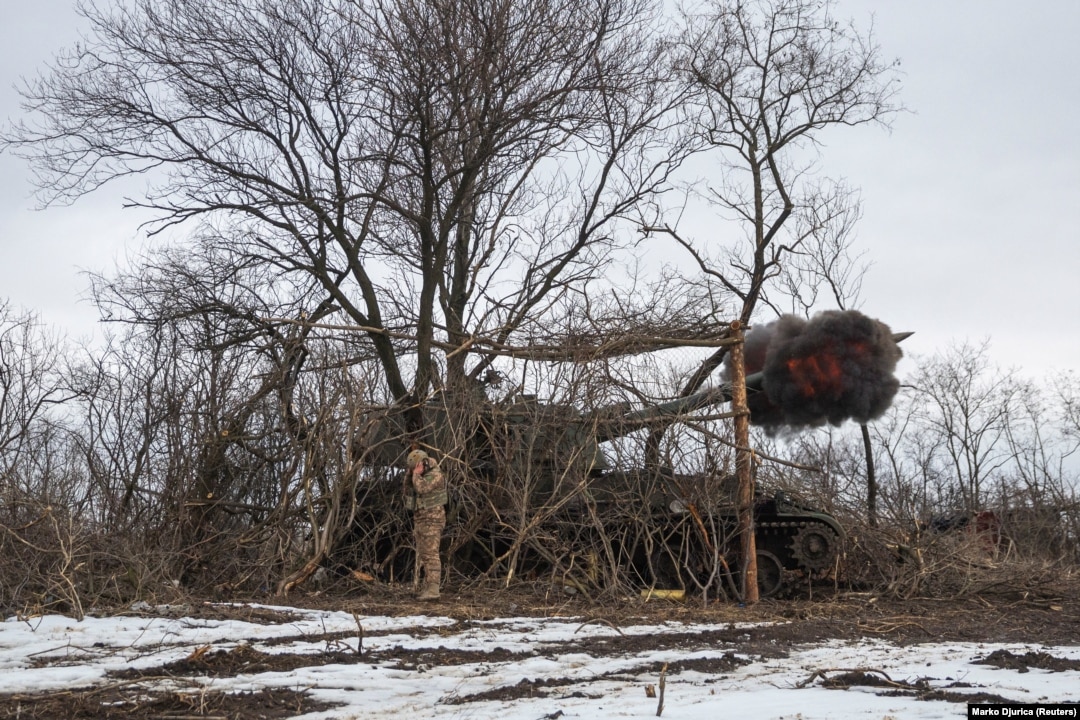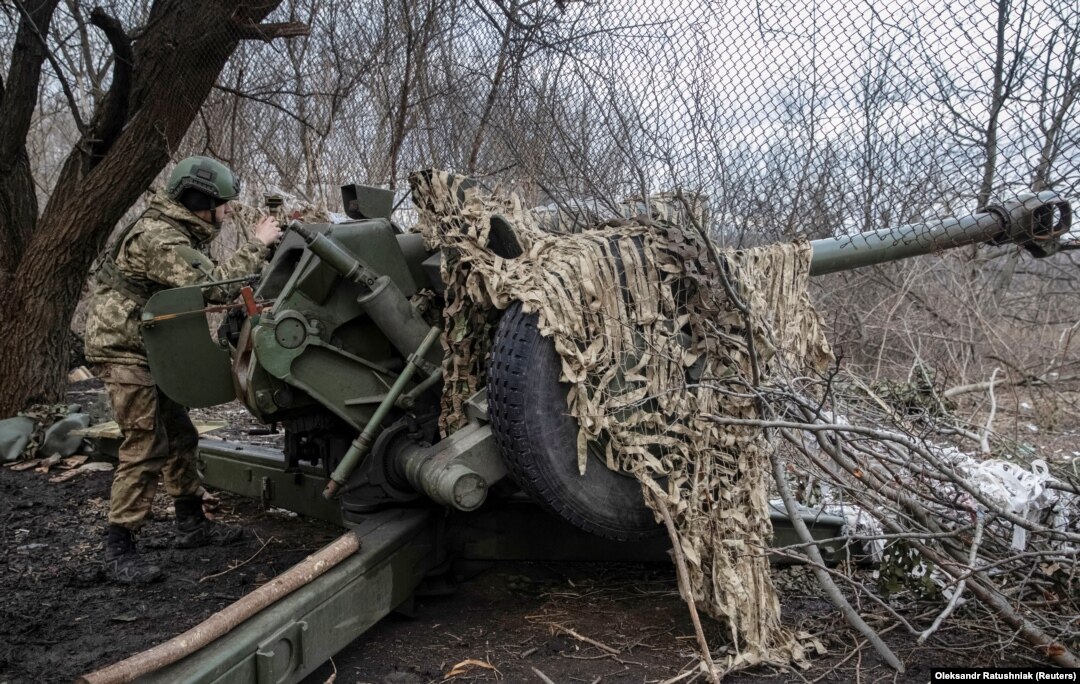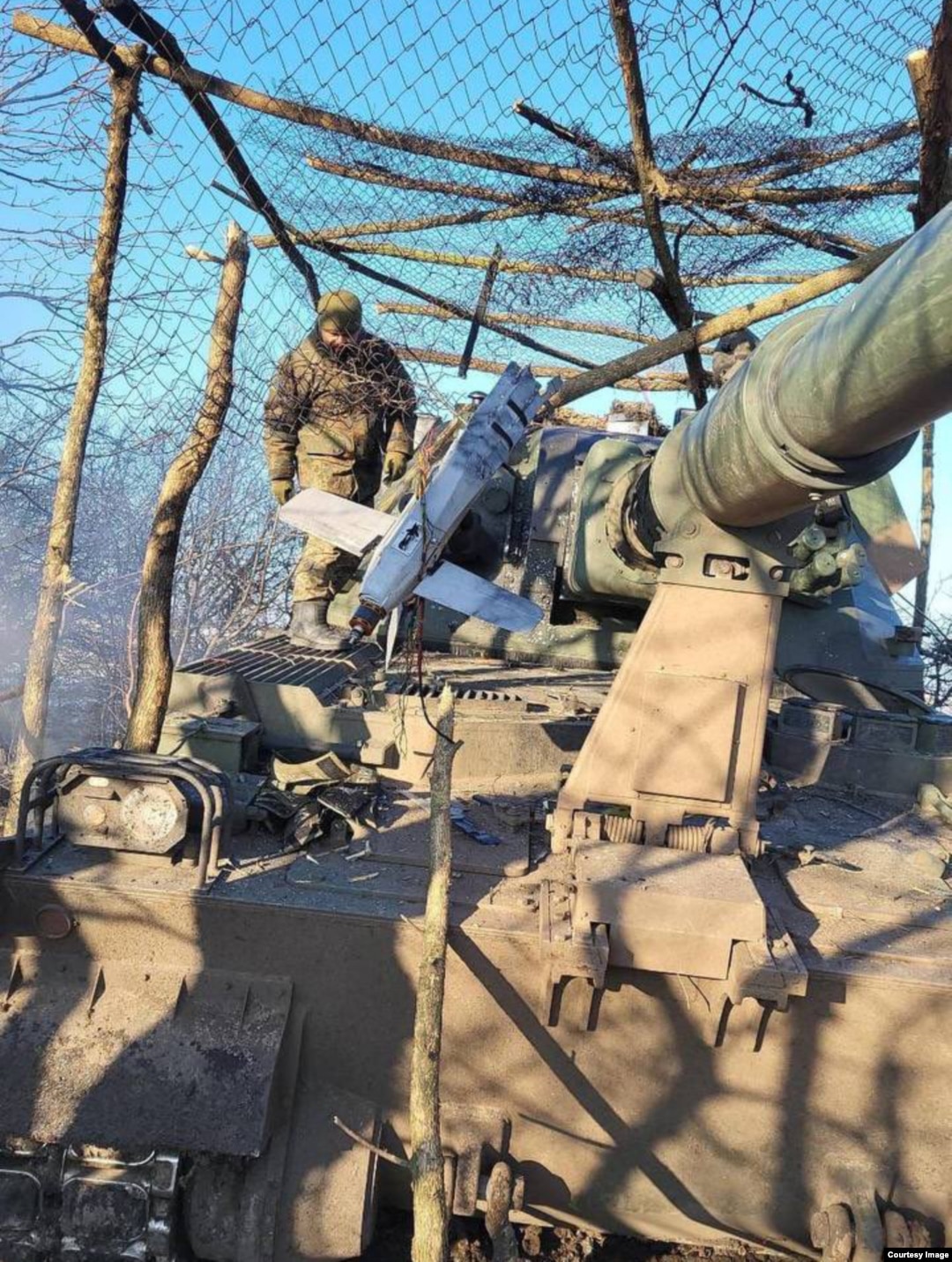The Makeshift Armor Of The Ukraine War

This March 27 photo shows what is becoming an increasingly common sight on the battlefields of Ukraine. The Ukrainian crew firing this Msta-B howitzer near Bakhmut have erected a screen made from chain-link fencing over their weapon.

Other crews, such as this Ukrainian team firing an Akatsiya self-propelled howitzer on February 25, built entire cages around the gun.
The administrator behind the weapons-tracking website Calibre Obscura told RFE/RL that such cages have been in use since late 2022 and are “mainly intended to disrupt Russian Lancet munitions.”

A Ukrainian soldier prepares to fire a howitzer from behind a screen of chain-link fencing near Bakhmut in March 2023.
In the spring of 2022 videos began emerging showing Lancets, a kind of Russian-made suicide drone, destroying numerous pieces of valuable Ukrainian weaponry.

The cages have successfully foiled suicide drone attacks in some cases. This image shows the rear half of a Lancet that reportedly failed to detonate after slamming into makeshift protection around a Ukrainian Krab howitzer in January.
Improvised armor has also been used by Russian forces in an attempt to counter modern weaponry used by the Ukrainian side.
These slat-armor cages over the turrets of Russian tanks began to be seen in the weeks leading up to the February 2022 invasion of Ukraine. The cages were intended to disrupt anti-tank missiles capable of swooping “top attack” strike angles.
A destroyed Russian tank with the remnants of turret-cage armor in Chernihiv, Ukraine, in April 2022.
A Russian tank commander told a journalist that the cages interfered with radio aerials needed for battlefield communications, and made getting in or out of the vehicles -- including in the event of a potential fire -- difficult. “We took them off and threw them away,” he said.
Other makeshift armor spotted in Ukraine appears to have been made independently of any central command decision. These Russian trucks carrying sections of a pontoon bridge were fitted with lengths of birch trees and scrap metal as frontal “armor.” The photo first appeared in March 2022.
In Ukraine, photos of this armored bus in a Kyiv car park were first posted in March 2023. The project to convert a civilian bus into a mobile hospital was reportedly crowdfunded by Romanian supporters of Ukraine’s war effort.
This Russian fuel transport vehicle, photographed at an unspecified location in what the Kremlin calls its “special military operation zone,” had wooden slats fitted across the driver’s cabin. The red star of socialism was added to its nose.
The same fuel truck also has wire mesh fitted to its tank, apparently in an effort to protect it from drone-dropped bomblets.
Other Russian fuel trucks were wrapped in birch trunks. It's unclear if this tanker was disguised to look like a timber-carrying vehicle – as Russian forces have been documented doing -- or if the wooden layer was designed solely as ballistic protection.
The lengths of wood would have offered some protection against small arms and shrapnel fragments but added significant weight to the vehicle, making it more vulnerable to getting bogged down on muddy roads.
This photo showing a Russian TOS-1 Buratino multiple rocket launcher first appeared earlier this month and shows the “heavy flamethrower” weapon system fitted with a mesh screen.
The screen is likely an attempt to protect the Buratino’s rocket pod from Ukrainian-made suicide drones, which have emerged on the battlefield in recent weeks, as well as drone-dropped bomblets.

